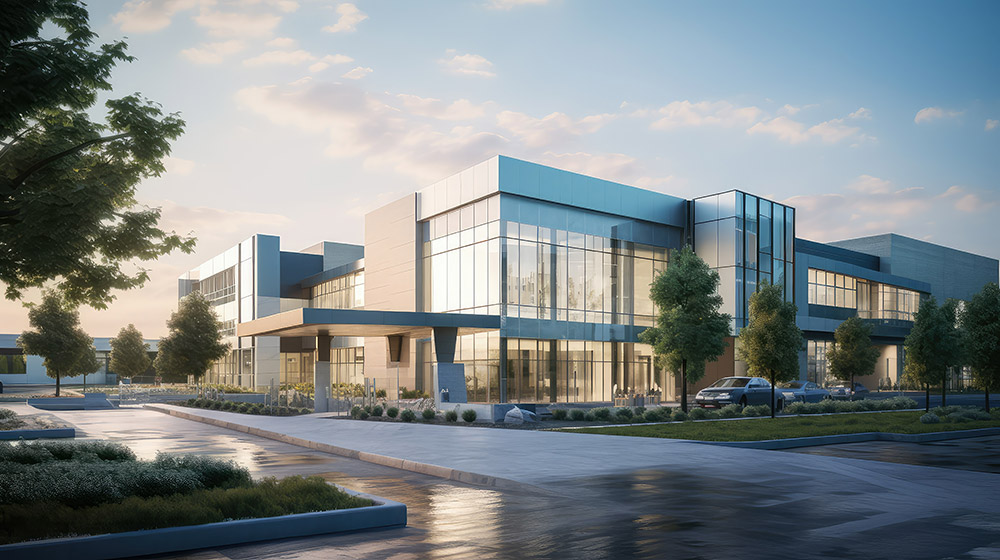Five Tips to Navigating the Changing Landscape of Life Science Real Estate
In order to navigate the evolving real estate environment, life science companies can reduce their risks with data-driven decision-making and collaboration with developers, policymakers, utility providers, and their industry peers.
Q2 2024

The imperative for life science companies is clear: they must navigate market complexities including the surging availabilities of subleases and the ebb and flow of construction pipelines with vigilance and agility. By understanding the interconnected nature of market conditions, regulatory shifts, and technological trends, stakeholders can position themselves for success.
Ultimately, strategic recalibration is not just about reacting to immediate changes but about anticipating and preparing for the future. It's about embracing change, leveraging opportunities, and charting a course forward that ensures resilience and sustainability in the ever-evolving landscape of life science real estate.
Here are five areas to keep in mind while navigating a dynamic landscape. By understanding the interconnected nature of market conditions, regulatory shifts, and technological trends, stakeholders can position themselves for success.
1. Risk Mitigation Amidst Uncertainty
As high interest rates cast shadows over capital-intensive endeavors, navigating risk becomes paramount. The uncertainty surrounding future revenue streams amplifies the need for meticulous planning and risk assessment at every juncture of decision-making. Nearly all users of life science space look to reduce design and construction risk by seeking out projects that have established infrastructure, a seller/landlord with deep proof of delivery success in the specific build-type being contemplated, and a municipality with a proven track record of new-project collaboration.
2. The Return of Project Due Diligence
Amidst market fluctuations, returning to fundamentals emerges as a guiding principle. Data-driven decision-making, historically entrenched in the life science sector, gains renewed significance. While it appears that the investor money spigot has turned on again, there is increase scrutiny of what invested funds are being used for. In general, investment to move a therapy through the approval pipeline are more important than making leasehold improvements to an asset that the landlord owns (however, sometimes the latter is required for the former!) Clear articulation of specifications, infrastructure readiness, and early coordination with utility providers can help prevent unexpected delays and increase in cost. Adaptive incentive structures bolster resilience against market volatility. Developers, once singularly focused on bio manufacturing, now embrace a broader spectrum of industries, from clean tech to advanced manufacturing.
3. Spotlight on Emerging Trends
We are poised to see incredible advances and value creation in GLP-1 (among other modalities) treatments of obesity, Alzheimer’s, and oncology indications. Developers of real estate and occupiers of those facilities should also be prepared to see technology (particularly from AI, automation, and robotics) advances that impact the footprint of their facilities, impact the amount and types of utilities needed to operate the facilities, and even change the parking ratio expectations of a building. Stakeholders will be focused on ensuring R&D and production facilities don’t become obsolete and can produce as much revenue as possible.
4. Diversification and Adaptation
The evolving landscape demands flexibility and diversification. Developers, once singularly focused on bio manufacturing, now embrace a broader spectrum of industries, from clean tech to advanced manufacturing. This pivot underscores the importance of building flexibility and exit options into the challenging endeavor that is purpose-built life science facility development. Buildings are typically intended to last well over 50 years, yet life science real estate preferences and use are constantly evolving. Owners of life science real estate must be prepared for a facility future that can’t even be imagined today!
It is vital that life science companies also partner with universities and community colleges to ensure that the workforce they need is being developed. 5. Collaborative Community Engagement
Collaboration emerges as a linchpin for success. Engaging with developers, policymakers, utility providers, and industry peers fosters synergistic solutions. As the competition for talent remains ever pressing, it is vital that life science companies also partner with universities and community colleges to ensure that the workforce they need is being developed. Companies that are competitors at the pharmacy need to become partners in the local communities they jointly reside in. Sophisticated stakeholders know that when it comes to creating vibrant communities that their employees love and that attract inbound talent to the region, they must work together with their competitors — to some extent — to collectively address challenges and fortify the industry's resilience amidst uncertainty.
Project Announcements
FUJIFILM Diosynth Biotechnologies Expands Holly Springs, North Carolina, Operations
04/15/2024
Japan-Based Kyowa Kirin Plans Sanford, North Carolina, Biologics Center of Excellence
02/29/2024
Japan-Based Armada Nutrition Expands Spring Hill, Tennessee, Production Operations
02/18/2024
Enable Injections Plans Springdale, Ohio, Manufacturing Operations
02/15/2024
QuidelOrtho Upgrades Athens County, Ohio, Operations
02/13/2024
British-Based AstraZeneca Plans Rockville, Maryland, Manufacturing Operations
02/07/2024
Most Read
-
2023's Leading Metro Locations: Hotspots of Economic Growth
Q4 2023
-
2023 Top States for Doing Business Meet the Needs of Site Selectors
Q3 2023
-
38th Annual Corporate Survey: Are Unrealized Predictions of an Economic Slump Leading Small to Mid-Size Companies to Put Off Expansion Plans?
Q1 2024
-
Making Hybrid More Human in 2024
Q1 2024
-
20th Annual Consultants Survey: Clients Prioritize Access to Skilled Labor, Responsive State & Local Government
Q1 2024
-
Manufacturing Momentum Is Building
Q1 2024
-
Public-Private Partnerships Incentivize Industrial Development
Q1 2024
